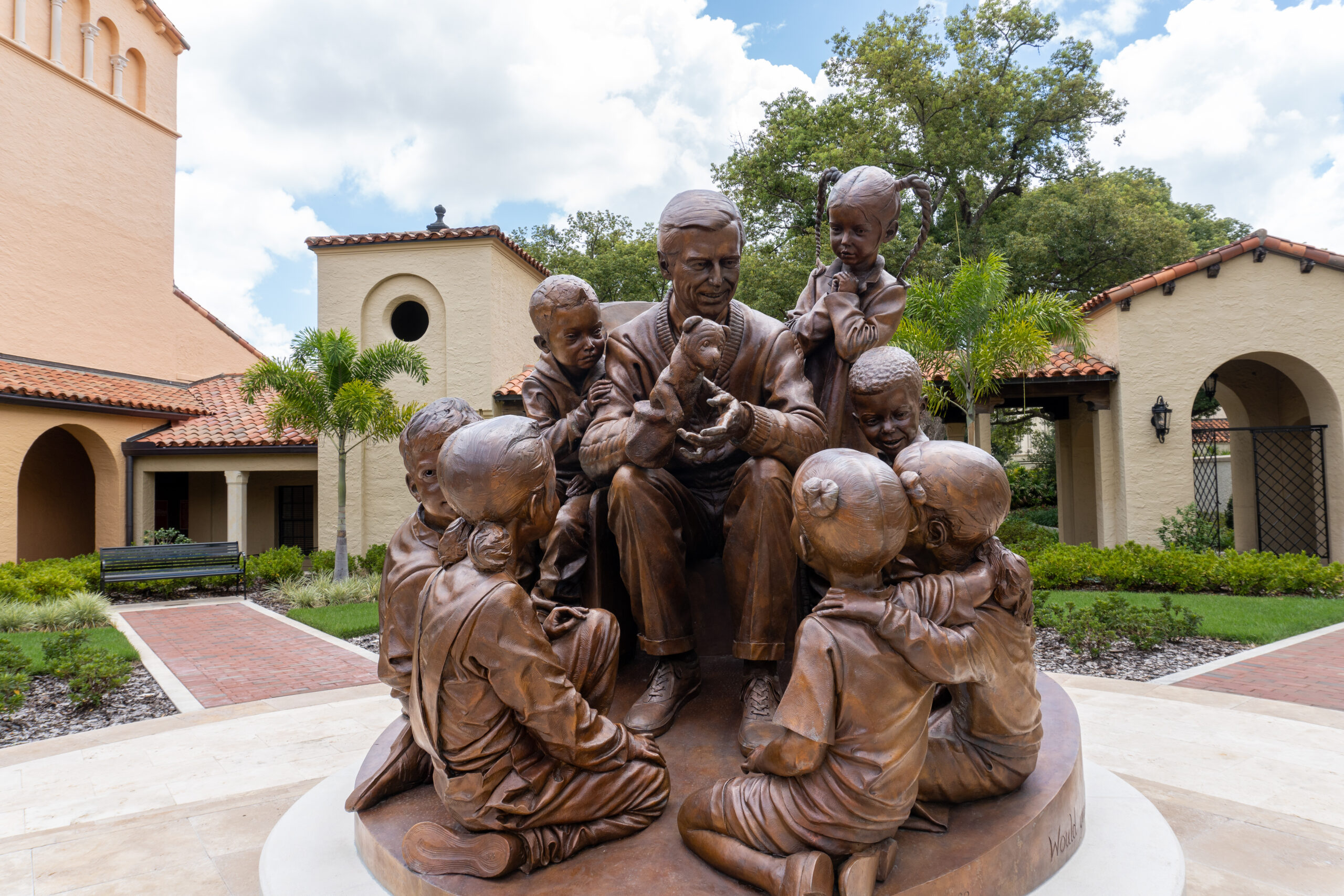Fred Rogers and Technological Opportunity
This past summer, while working on the 2025 Blaschke Report, I had the opportunity to visit the Fred Rogers Center in Latrobe, Pennsylvania. Alongside my research partner, I delved into fan letters, personal correspondence, and, most memorably, original handwritten scripts, These documents that helped inform a developing project on what Mister Rogers’ Neighborhood can teach us about thoughtful and responsive civic discourse. As I sifted through these materials, I began drawing connections between Rogers’ work and today’s debates over screen time in K–12 education.
Surprisingly, Rogers was not fond of television. He found much of children’s programming crass, violent, and educationally hollow. Yet, despite his concerns, he recognized television’s inevitability and its potential for social good. In 1968, Mister Rogers’ Neighborhood premiered, running until 2001 and leaving a legacy that endures to this day.
The creation of the Neighborhood was, in its own way, radical. Instead of pushing for bans or ignoring harmful media, Rogers embraced television as a tool to be reshaped for positive purposes. Where other shows relied on violence and spectacle, his program offered children an authentic, developmentally attuned portrayal of human experience. Across nearly 1,000 episodes, he addressed difficult topics (death, divorce, even assassination) always with honesty and care. Rogers understood television’s ubiquity and used its reach to help children make sense of their world.
What does this have to do with today’s screen time debates? As state legislatures pass laws restricting smartphones in schools and parents grow increasingly anxious about digital tools, fear has begun to overshadow nuance. As I argue in the 2025 Blaschke Report, screen use (even smartphone use!) can be positive when it is intentional, balanced, and developmentally appropriate. Technology is already woven into the fabric of education and daily life (a recent op-ed in the New York Times detailed how a Wifi ban proved problematic for one West Virginia school); blanket bans only leave students unprepared for the realities they will face beyond school.
Like Rogers in the 1960s, educators today should view smartphones, AI, and EdTech as inevitabilities that can be shaped into opportunities. Despite the varied personal opinions of individual educators, schools have the chance to use new technologies in ways that are pragmatic, creative, and academically meaningful. Reflexive bans, by contrast, deny students the chance to build the digital skills they will need in higher education and the workforce.
In my final hours at the Rogers Center, I came across guidance pamphlets published after Rogers’ death in 2003. They provided parents with research and practical advice about children’s screen time, reminding me that this conversation is not new. Public anxieties about technology tend to repeat in cycles, but so does the resilience of educators who navigate them. Today’s debate is simply the latest chapter in a long story, one that Rogers himself helped us begin to tell.
Author: Cooper Sved, 2025 Blaschke Fellow
This blog is part of a series preceding the publication of the 2025 Blaschke Report. Read the entire series:
“What Does ‘Screen Time’ Mean, Anyway?”
Children, Screens, and Parent Perspectives
Cell Phones, Schools, and Solutions
EdTech and Professional Development
Fred Rogers and Technological Opportunity


